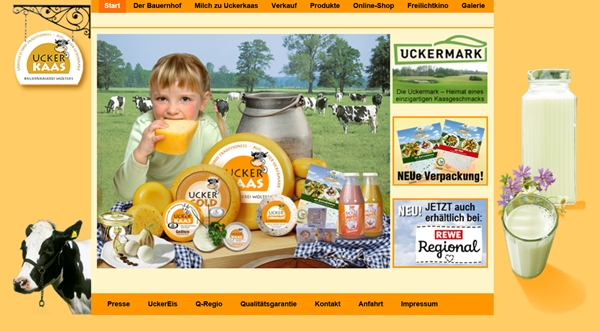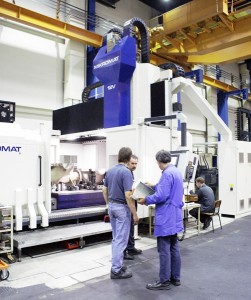Small to medium-sized businesses are the key to success of Gemany’s economy. The so-called Mittelstand is also a source of innovation and employs almost two third of Germany’s workforce
The German engineer is a perfectionist. Nerver satisfied but forever compelled to tinker and improve.
In the recent economic downturn Germany has been a notable exception to most of its G8 partners. Escaping the clutches of the recession quickly and sustaining steady economic growth, Germany has managed to weather the recent storm markedly well. Whereas this cannot be attributed to any single cause, the structure of the German economy – the vast majority of it reliant on small and medium-sized businesses – is certainly a significant factor.
99% of German businesses
In Germany, Mittelstand is the umbrella term for small and medium-sized enterprises (SMEs). According to the Institute for Mittelstand Research (IMF) in the German city of Bonn, the Mittelstand describes over 99% of German businesses. That means almost two thirds of the nation’s employees are working for a small or medium-sized business.
To escape the nebulous realm of business speak we should look at what exactly constitutes a small or medium-sized business. Interestingly, there is both a German definition (issued by the IMF Bonn) and one employed by the European Commission (Europe’s chief regulatory body). The German definition picks out any business with up to 500 employees and an annual turnover of less than €50 million ($60m) to be included in the medium-sized bracket. Businesses with up to nine employees are ranked as “small”.
The tripartite distinction of the European Commission
In contrast, the European Commission offers a tripartite distinction. The smallest size has up to nine employees with no more than €2 million ($2.5m) turnover. The next category, “small”, must have 49 or fewer employees where the medium-sized bracket can have up to 250 employees with an annual turnover of €50 million ($60m) or less.
Despite the differences, especially towards the top end of the scale, both definitions render nearly the same results in terms of economic importance. The discrepancy only being a matter of decimal points. Figures published by the IMF Bonn show that under the German definition, SMEs constitute 99.6% of total German businesses whereby the European criterion sets them at 99.5%.
Vocational training
Given its share in the country’s economy, it is hardly surprising that the Mittelstand is also responsible for over 80% of the vocational training in Germany. It is from this source of innovation – young minds with new ideas – that economic growth is sustained and promoted.
The German system of vocational training is twofold and incorporates a much broader range of professions than its Anglo-Saxon equivalents. The first module is theoretical, usually taking place in vocational colleges with the second being practical and requiring on-the-job training within a company. The apprentice or trainee thus receives a sound foundation in his or her chosen profession while being supervised by experts and practitioners.
By fostering the younger generation (the trainees have proper work contracts and if they prove suitable stand a chance of being taken on permanently at the end of their training), SMEs play an important role in bolstering Germany’s economy. After all, only well-educated and trained professionals are able to compete in an ever more globalised and knowledge-based business world.
Success ‘Made in Germany’
This international outlook is characteristic for Germany’s economy. It is well known that Germany frequently led the world as an export economy in the past. “Made in Germany”, originally intended as deterrent for British consumers in the 19th century, has long since acquired the status of a mark of quality with German products being sought-after worldwide.
Again, it is the Mittelstand which actively promotes this standard. Owing to German history, namely its very late territorial unification, enterprises that found themselves in the scores of small principalities and fiefdoms had to establish cross border trade to remain viable. Maintaining this tradition today, German enterprises are generally attuned and open to global business relations.
Even many small-sized businesses are no strangers to international trade. A good illustration of this is the case of a small medical technology company from Leipzig with seven employees. They have developed products which are used in over a dozen countries worldwide. This German company’s back treatment solution has become the byword for successful back-pain prevention and rehabilitation in South Korea, a country no stranger to great technological innovations itself and arguably home to the most modern and cutting edge spinal treatment hospitals. This is just one example of many.
Hidden champions
Indeed, the so-called Hidden Champions or world market leaders in their field who are not household names, are often small and medium-sized businesses. The author and business consultant Hermann Simon, an “international collector” of Hidden Champions, shows that over 50% of these companies can be found in Germany, the overwhelming majority in the Mittelstand. They supply niche markets that were often created by these very same businesses, who are then ideally placed to cater to their market’s demands.
Grants and network structures
The importance of small and medium-sized enterprises and their value to the country’s economic standing also influences Germany’s economic policy. Innovation is promoted by grants and network structures within which businesses are able to compare notes, agree cooperation and receive expert mentoring.
Many of these measures are specifically targeted at SMEs. Even beyond the government-organised networks, it is not surprising that the proverbial German penchant for founding associations also flourishes in the Mittelstand. There is an impressive number of associations and societies in different branches of the economy where small and medium-sized businesses communicate and cooperate.
This entrenched collaboration can also be seen as a factor of the prevalence and strength of the Mittelstand. Instead of having to grow a business into a behemoth which can prove unwieldy in economically unstable times, project-based cooperation allows companies to pool resources and benefit from each other’s expertise while retaining the level of manageability that has seen small and medium-sized enterprises through the economic downturn of recent years.
The strength of the German Mittelstand thus emerges as a vital aspect of the country’s current economic performance.
Dr. Helen Blümel is a political scientist. She works as a manager and science journalist in Leipzig



